#participatory installation
Text
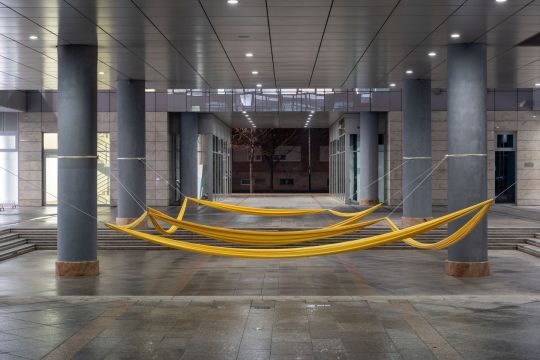
Moon on the Sea at the 28th Slavonian Biennial "New Paradigms of Happiness, from Osijek Dada to Contemporary Chaos" curated by Valentina Radoš
Photo: Tomislav Herega
#art#installation#participatory installation#yellow#kaloyan ivanov#osijek#croatia#28th slavonian biennial
15 notes
·
View notes
Photo

MAURIZIO CATTELAN / “AMERICA” / 2016
EXHIBITED @ THE GUGGENHEIM, 2016–17
[18k solid gold (103 kg / 227 lb)]
In September 2019, America was installed at Blenheim Palace in the United Kingdom, where it was available for use as part of an exhibition of Cattelan's works. It was placed in a water closet formerly used by Winston Churchill. On 14 September, the sculpture was stolen.
#maurizio cattelan#sculpture#installation#conceptual#contemporary art#participatory art#satirical#guggenheim#gold#italian#art#u
75 notes
·
View notes
Text


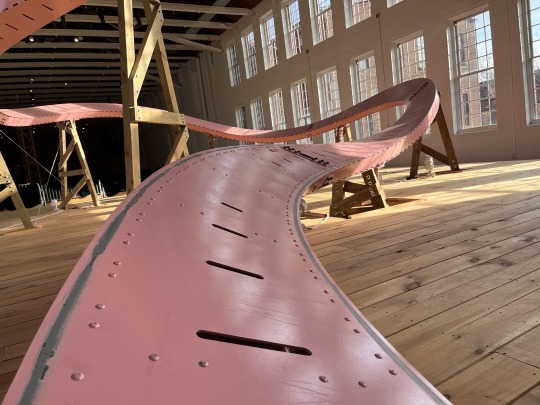


EJ Hill - Brake Run Helix. A working rollercoaster as art installation. Runs hourly with advance reservations.
#yzshot#travel#art#modern art#contemporary art#art contemporain#ej hill#sculpture#statue#participatory art#pink#rollercoaster#installation#mass moca#north adams#massachusetts
2 notes
·
View notes
Link
I have an exhibit at 21c Museum Hotel Chicago: An activation / site-specific installation of my Dreams of a City project! Thank you to Museum Manager Juli Lowe and everyone at 21c for making this happen!
For those of you who aren’t familiar with my labor of love: From 2008-2009 in Manhattan, and then from 2012-now in Chicago, I’ve been making *thousands* of pre-stamped self-addressed postcards, each with the prompt, “Tell me one thing you dream of doing before you die. Use this card as your canvas,” and each with a different code on the bottom. I’ve been leaving these postcards in public places all over the city, using the codes to record where I leave each one. So, when a card returns to me, I’m able to match its code with its location / am able to tell where each one was found, and have been gradually creating a map of the city from all your dreams. It’s a love letter to the city and a message of hope.
View all 100 mapped Manhattan dreams 2008-2009 on Flickr.
View all 600+ mapped Chicago dreams 2012-now on Instagram.
More information here.
Recent interviews about the project:
WGN Morning News (live TV interview): YouTube video & Facebook video
WBEZ (live radio interview on Reset)
Chicago Reader: online version & pages 10-11 of PDF of print version
The current museum exhibit: x
Dreams of a City © Jenny Lam 2008-2022
#mapping#mail art#dreams#hope#snail mail#interactive art#public art#data#participatory art#writing#installation art#art installation#art#art museum#artist#museum#chicago#postcard#postcards#dream
1 note
·
View note
Text

Don’t Stop: Continuing the Fight against Cop City
https://crimethinc.com/StopCopCity2023
Over the past two years, the movement to #StopCopCity and defend Weelaunee Forest has become one of the fiercest struggles in North America. Opponents of Cop City have repeatedly destroyed equipment and forced contractors to withdraw from the construction project, while the authorities have killed one forest defender and pressed outlandish racketeering charges against 61 more, including the members of a legal support collective.
In the latest installment of our comprehensive history of the movement, we trace its trajectory from the City Council vote last June to November's Block Cop City mobilization and its aftermath, exploring how the movement has sought to maintain a participatory and confrontational character even under tremendous pressure.
766 notes
·
View notes
Text


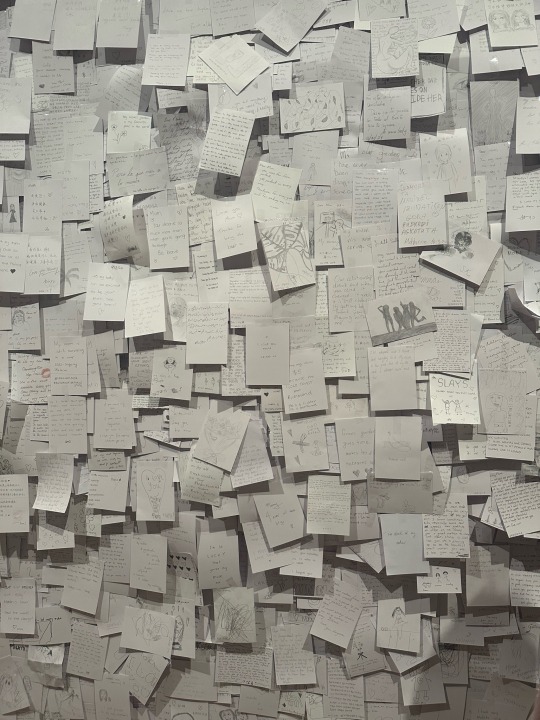




My Mommy is Beautiful, participatory installation by Yoko Ono (2023)
42 notes
·
View notes
Text
Screw it, I'm posting SQUIP lore anyway
I just spent an hour writing the word "squip" over and over with varying capitalization nuances, so I am posting the exposition whether it is needed or not.
Okay. OKAY. ok. SO. In the pre-musical days where the Be More Chill novel was published and the internet was young and exciting, there was a tie-in website.
I lied. There were TONS of tie-in websites. They all existed in-universe and were ridiculously interconnected, and thank god for the wayback machine. Be More Chill was advertised - or as Jeremy says, "I wrote that above. I wrote Be More Chill too, with the help of my squip, under the name Ned Vizzini, which I figured was so dumb no one would think was real." The websites were linked as product testimonials or website ads (cheekily disclaimered as "Ads by Squipple").
I don't know if I can even collect all the website urls quickly without missing some but here's a spattering (with the link going to the wayback machine). Most of these websites aren't just a single page but an entire site:
Humiliationsheet.com for a list of Jeremy's daily mortification events
Squipette, a SQUIP - but pink!
Bemorechill.com, Jeremy's book website
InterSquip.com for people worried about cybersecurity - with or without a squip, take this pill and see who has one installed!
GenerationSquip.com - Sort of an unreality disclaimer that also serves as fan hype. (How do we know it's old? It suggests we "google 'squip'" and helpfully provides us with a hyperlink to the google home page.) It calls this "the squipiverse" a "100% participatory reality"
Squipped.com - a gossip rag collecting user testimonials about bad experiences with squips. It, like many of these sites, collected fan-submitted content - "Tell us about what happened to you when you came in touch with a squip! (If you don't have a story, use your imagination--we need ruthless tactics to fight the industry.)"
Squipnews.com - collecting SQUiP tips from the community in the fields of Business, Technology, SQUiP & Society, Health, and Entertainment
Iwanttobecool.org - Promoting the use of squips despite those naysayers Squipsters Against Squips. As the site poll asks: "How should we deal with anti-squip cyber-terrorists? - jail time - fines - physical dismemberment"
SQUIPusa.com - SQUIP-specific insurance which regrettably does not cover squipotomy or squipiatry, but does cover some SQUIP viruses: "SQUIPusa squipsters are now entitled to one free virtual session with an Intersquip squipnician for each week they have lost their "coolness" due to a National Squip Board-recognized virus. Valid up to six weeks"
Squipsoft.com, the parent company of squip technology. Its homepage addresses important questions like: how can you get good grades that aren't so perfect as to tip off the authorities? Use "Squipsoft School" which promises "guaranteed averages of 96.82 in every subject" except for Business Ethics or Compubiology. Or install SquipServer, which is an honest-to-god VPN ad: "Using a virtual private network (VPN) framework, this revolutionary technology turns your squip into a server capable of temporarily extending your coolness to up to three acquaintances."
CelebritySquip.com - "What percentage of American Idol finalists have squips?"
SquipWorks.com - Offering add-on tech for your squip like the MakeOut Optimizer 4.0 or the Nanolyzer (which picks up on social clues to one billionth of a meter).
SquipWorld - A more chatty experience of Squips spotted in the wild and other squip news.
Squipzophrenia.com - (I'm not endorsing the term...) - Information about the phenomenon in the novel where, if a SQUIP is turned on while the user drinks alcohol, it starts ordering them to kill people. This site has academic research on the subject and related Squip disorders. "However, [avoiding alcohol] is not a foolproof plan. Marijuana and mescaline can also cause squipzophrenia, although with the mescaline we're not sure and just think it might be the mescaline, you know?" Other squip disorders include "Loss of recognition of squip insertion i.e. 'I didn't take a pill, I'm just cool naturally!'" which can be cured via the Konami code; Squip flashbacks after a Squip is removed (which the site describes as likely false claims for the sake of "perpetuating insurance fraud"); the dangers of buying used Squips on ebay; or feeling that you can't live without your squip: "acute squipdependence. The solution is to surround yourself with calming bright plastic objects and remember that everything is fine."
Squipsters Against Squips - The notorious anti-Squip lobbying group advocating for a National Squip Registry.
Squipster - A squip-based social media platform that sadly doesn't seem to have made it to the public yet.
#be more chill#bmc#squip#idk if tumblr will even show this in the tags because of the many many links
237 notes
·
View notes
Text
Art Movements
Art movements, "schools", artist groups, and societies do not function in the same way as they once did. There were art movements in the earlier years of contemporary art but those too have gone the way of art history. In the late 20th to 21st centuries there are no art movements to speak of, due to globalization and the sheer volume and diversity of the art world. Even Conceptual Art, which endures to this day, is more of a term or category than a movement.
Some will argue that there are lots of contemporary art movements – Minimilism, Monochrome, and Participatory Art, to name a few. True, though I see these as a club with so many members that connection and cohesiveness are impossible to achieve. That isn't to say that's bad. Again, it's due to how large, diverse, and world-wide these movements are. Everyone doesn't know everyone as they did in Impressionism or Surrealism.
An example of Monochrome Art

Robert Ryman (American, 1930-2019 • Ledger • 1982 • Enamelac paint on fibreglass, aluminium and wood • Tate Modern
l'm nostalgic about the art created before the 1950s. I like some of work done in the earlier movements of contemporary art — pop art is fun. The Fluxus Movement produced some cool stuff –à la Yoko Ono. Word Art is not my favorite, though it is unlike me to dismiss it as bad art because I've not seen much of it.
An example of Word Art

Barbara Kruger (American, b. 1945) • Untitled (Your body is a battleground) • 1989 • photographic silkscreen on vinyl
An example of Participatory Art
I "participated" in this artwork – Untitled (Portrait of Ross in L.A.). It was colorful, interesting, and fun but also very sad. I believe it was at The Whitney in New York. It's a pile of candy in confetti colored wrappings (In other installations the colors vary). It can exist in more than one location at the same time, starting with a specific weight 175 pounds (79 kg). Participants are encouraged to take one candy and the quantity diminishes. The artist, Félix González-Torres was a gay man whose partner, Ross Laycock, died of complications of HIV/AIDS in 1991. One art critic's interpretation of the art work was "the diminishment recalls how he (the artist's partner) wasted away before dying." Félix González-Torres himself died in 1996 of HIV.
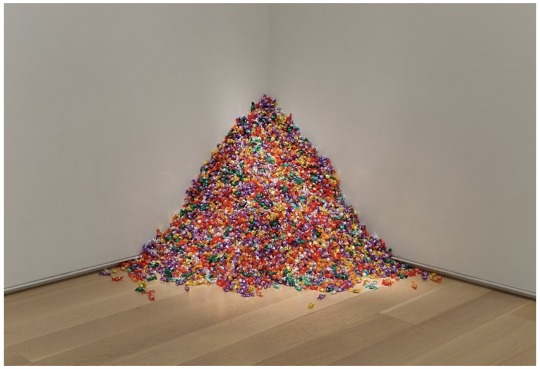
Félix González-Torres (Cuban-American, 1957-1996) • Untitled (Portrait of Ross in L.A.) • 1991
What is your favorite contemporary art movement or individual artist? Please comment. You don't have to be an expert, you just have to know what you like. I'd love to hear from you!
#art#art history#art movements#contemporary art#21st century art#word art#conceptual art#monochrome art#felix-gonzales torres#barbara kruger#robert ryman#participatory art#contemporary art movements#20th century art movements#hiv/aids#queer artist#woman artist#pagan sphinx art blog#writings about art
21 notes
·
View notes
Text
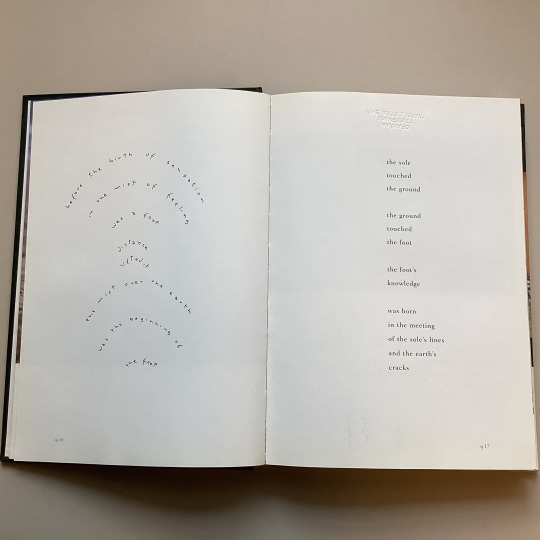


Happy World Poetry Day & Women’s History Month!
Cecilia Vicuña (b. 1948) is a Chilean poet and artist based in New York and Santiago, Chile. Vicuña has been creating a body of impermanent, participatory work she calls “lo precario” (the precious) since the mid-1960s.
Vicuña’s multi-dimensional works begin as a poem, an image that morphs into a film, a song, a sculpture, or a collective performance. These ephemeral, site-specific installations in nature, streets, and museums combine ritual and assemblage.
Her work calls attention to the politics of ecological destruction, cultural homogenization, and economic disparity, particularly the way in which such phenomena disenfranchise the already powerless.
The precarious : the art and poetry of Cecilia Vicuña
Edited by M. Catherine de Zegher
Added t. pg. title: Quipoem
Hanover, N.H. : University Press of New England, c1997.
HOLLIS number: 990076946700203941
#WorldPoetryDay#CeciliaVicuña#WomensHistoryMonth#Poetry#WomenArtist#Quipoem#HarvardFineArtsLibrary#Fineartslibrary#Harvard#HarvardLibrary
13 notes
·
View notes
Note
Thank you for all your extensive replies about politics, they’re fascinating. Do you think Putin’s framing of the Russo-Ukrainian war as ‘anti-Fascist’ (de-Nazification etc) is a deliberate callback to Soviet propaganda where all opposition was termed Fascist? Such keywords must appeal to the old Soviet generation, but most soldiers nowadays would’ve been born post-1989. Is ‘anti-Fascism’ still a powerful motivator in modern Russia to your knowledge?
100%.
Even though the Soviet Union might be gone, the "Great Patriotic War" as Russia calls the Second World War still looms very large in Russian cultural history. Many Russians see the Great Patriotic War as a wholly Russian endeavor, that the back of the Nazi war machine was broken by the stalwart Russian soldier. This ignores that the Soviet Union had plenty of non-Russians in the Red Army, to include Ukrainians, whose contributions are minimized by Russian revisionist history, as well as Soviet revisionism which glossed over the alliance that the Soviet Union had with Nazi Germany from 1939-1941, which included a joint invasion of Poland (hence why the Molotov-Ribbentropp Pact should be considered more than a mere non-aggression pact). It also neglects that the bulk of Soviet casualties, particularly in 1941, were not due to Soviet sacrifice but Soviet incompetence. Stalin didn't prepare for an invasion and ignored intelligence both from his own domestic military intelligence and the West. While I understand and appreciate the need for a soldier to sell his life dearly if indeed it must be spent, the early Nazi incursions into the Soviet Union were defined not by heroic self-sacrifice but by abject stupidity.
Soviet, and later Russian, narratives of the Great Patriotic War portray Nazism as a distinctly anti-Soviet and anti-Russian movement. In many cases, the anti-Semitism of the Nazi regime is downplayed; the victims of the Holocaust were primarily considered to be Soviets, not Jewish. Part of this is because Stalin embarked upon his own anti-Semitic pogroms, and part of it was due to the differing conception of Nazism between Soviets and the West. When the West thinks of Nazism, they primarily conceive of it in terms of the Holocaust because of how utterly abhorrent it was. When a Western observer thinks of a Nazi, their immediate response is: "Who are they murdering? How many? What methods are they using?" This really couldn't be done in the Soviet Union, because the Soviets also had an institutional policy of extermination - not only the Great Purge by Stalin, but dating all the way back to Lenin's categorical exterminations. So Nazism was conceived as anti-Russian to square the circle, and everything from Soviet covert support of Nazi rearmament to allowing Japan to resupply Nazi Germany via the Trans-Siberian railway to the joint invasion of Poland was just ignored.
This continued into the Cold War, where the Soviet conception of Nazism as anti-Russian was able to be easily transferred to the West and NATO. Soviet conceptions of fascism exemplified that fascism was capitalism with the veneer of participatory democracy stripped away, thus the West were simply Nazis who pretended harder. It served a very useful purpose in keeping the Soviet public mobilized against the West, who were predicted to invade soon after the end of the Second World War (the West also believed the Soviets would invade Western Europe while it was still rebuilding, hence the formation of the Western Union and NATO following the installation of puppet regimes in Eastern Europe).
So in the modern day, Russia tries to harp that the Ukrainians are a far-right, nationalist, and Nazi regime devoted to exterminate Russians to sell their war to the populace. They try to latch on Ukrainian far-right movements that gained prominence after the Russian annexation of Crimea in one of the best modern examples of the chutzpah defense, despite the diminishment of the far-right in Ukrainian politics in the intervening years. This isn't surprising, it's right out of Hermann Goering's playbook to denounce the opposition as unpatriotic. For all their pronouncements of wanting to destroy Nazism, Russia is one of the best examples of a fascist state that we have, in the sense of a state striving against the decadence of liberalism that was the hallmark of early Nazi propaganda (whereas China is the best example of a large power ethnostate).
The Russian cultural zeitgeist today still believes that the West largely dismisses Soviet contributions to World War II, and this is before you get to the very real and quite prominent phenomenon of Russians who wish for a Nazi-Soviet pact that endured and destroyed the West, with a special emphasis on Great Britain. In the 1950's, this had a kernel of truth, the West largely dismissed Soviet sacrifices. In the modern day though, this is largely inaccurate - military scholarship largely acknowledges Soviet contributions. However, it acknowledges Lend-Lease aid, which does little to stroke Russian egos, so in this sense, we actually have a reversal of the old 1950's US textbooks. That era definitely did minimize Soviet contributions, but these days the primary source of historical disinformation is from pro-Russian and pro-Soviet sources which reduce the Second World War almost entirely to Soviet contributions, often forgetting about the Pacific Theater save in the invasion of Manchura. This is supported by tankies and campists in the West who conceive of the Second World War as a means by which to glorify their own tribe. Coming from a warts-and-all historical enthusiast like myself, I find it disgusting.
So yeah, the Soviet Union may be gone, but the damage it created endures.
Thanks for the question, Vincint.
24 notes
·
View notes
Text

Moon on the Sea at the 28th Slavonian Biennial "New Paradigms of Happiness, from Osijek Dada to Contemporary Chaos" curated by Valentina Radoš
Photo: Tomislav Herega
1 note
·
View note
Text
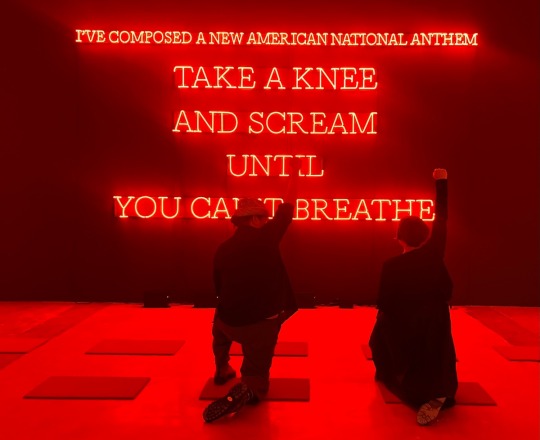
Nicholas Galanin, “Neon American Anthem (red)” (2023),
(Installation at SITE SANTA FE activated by artist Nicholas Galanin and curator, Brandee Caoba.)
Nicholas Galanin: Interference Patterns presents a selection of the artist’s new and recent sculptures, installations, and videos celebrating Indigenous knowledge and continuum amid ongoing colonial occupation. Examining the complexities of contemporary Indigenous identity, Galanin unites traditional and contemporary practices to navigate “the politics of cultural representation.”
I use my work to explore adaptation, resilience, survival, dream, memory, cultural resurgence, and connection and disconnection to the Land. My process of creation is a constant pursuit of freedom and vision for the present and future.
Through his expansive creative approach spanning varied materials and processes, Galanin presses for an urgent change of heart, mind, and action, on a global scale. Central to the exhibition is the newly commissioned “Neon American Anthem (red)”, a participatory installation that invites audiences to “take a knee and scream until you can’t breathe” in response to legislated violence and oppression by the United States on those within and beyond its borders.
Embedding incisive observation and reflection into his oftentimes provocative art, Galanin’s work aims to redress the widespread misappropriation of Indigenous visual culture and the impact of colonialism, as well as collective amnesia. His works not only celebrate and build upon Indigenous references; they are also intended to spark an urgent criticality in its viewers. Interference Patterns at SITE Santa Fe in New Mexico hopes to offer vital space for reflection on settler-colonial capitalism’s ongoing role in cultural erasure, forced assimilation, displacement, environmental violence, and the climate crisis.
To learn more, visit sitesantafe.org.
image courtesy the artist and Peter Blum Gallery, New York; SITE SANTA FE commission with the support of Peter Blum Gallery, New York, and Becky Gochman; photo by Carolina Franco.
Courtesy: Hyperallergic
#human rights#art#humanity#equal rights#freedom#breath#neonlight#SITEsanta fe#anthem#america#nicholas galanin#brandee caoba#colonialism#indigenous#eric garner#police brutality#police violence#hyperallergic
2 notes
·
View notes
Text

Quote:
…Matta- Clark received a grant for a project that would teach construction skills to youth from impoverished neighborhoods. The proposal specified the creation of an urban scrap yard and recycling depot for reusing salvaged materials from demolished buildings in these areas. Matta- Clark’s death in 1978 prevented the realization of this innovative project. Nevertheless, his final writings and interviews reflect his plans for participatory architecture projects that would be “responsive to the express will of occupants.”
Comment:
Before starting the MFA last fall, I worked with youth at local churches, teaching them life skills based on biblical principles. On occasion, I created artistic projects for the creatively inclined teens in the program. These projects included t-shirt printing, drama skits, short films, musical explorations, murals and sculpture / installations for events and holiday celebrations. Those involved enjoyed freedom of expression and an escape from the mundane. The audience and observers were often surprised by the creativity. I enjoyed providing the resources, ideas, encouragement, and safe environment for which youth could unveil their hidden voice. In my 15 years of youth ministry, these were some of my most treasured moments. I consider encouraging young people to find and embrace the inner creator within them as a major accomplishment. Learning that Matta-Clark sought to impart his skills with young people brought back great memories and challenges me to revisit my role as an artist who has valuable skills to share.
Question:
Do artists have a responsibility to contribute to their communities?
8 notes
·
View notes
Text
Week 15 6/Jun/2023
Title of the Artwork: Mindful Maker Space
The Expanded Field
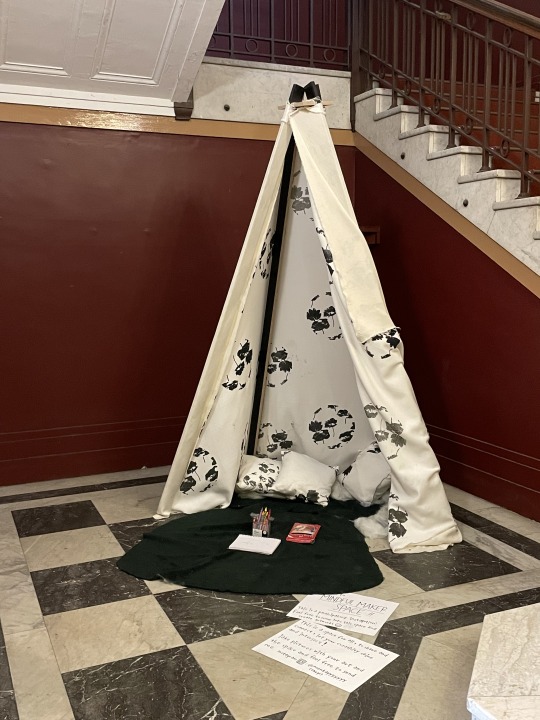
Participatory Installation (fabric with floral prints, pillow, crayons, colour pencils, sketchpad, wools, fabric)
Concept
A participatory installation, in which people can come into the space that I created and make art together, connecting each other through this sketchpad. The concept of this installation was focused on my thoughts regarding my current art practice/life: I worry more than I enjoy, and anxiety is taking over my creativity. I also experience familiarity as I move back and forth while having family in both Australia and my home country. So, I created this maker space, with the intention of evoking people’s feelings of comfort, familiarity and mindfulness.
The exterior is a tent which brings the symbol of nomadic and transitory, it also has this ‘door’ that allows people to have their own private space and time. The interior of the space consists of these summery patterns of poppies and waterlily prints from Fujiwo Ishimoto’s “Hurmio” (1990) and some stick-on lights. I chose these floral prints because they do not represent anyone, and I think that floral prints are ubiquitous to put in bedrooms. There were two artists that inspired me – Lara Schnitger and Kimsooja. Lara Schnitger has this idea of symbolism where she has text and flags on the exterior of the fabric, where those text and flags were a sign of feeling anxious or worried, so I shifted this idea of bringing this symbol of comfort (prints) inside the space. I was inspired by Kimsooja’s participatory artwork idea, in which he invited and connected the audience to make clay work. I decided to keep it simple, to let them draw on the sketchpad.
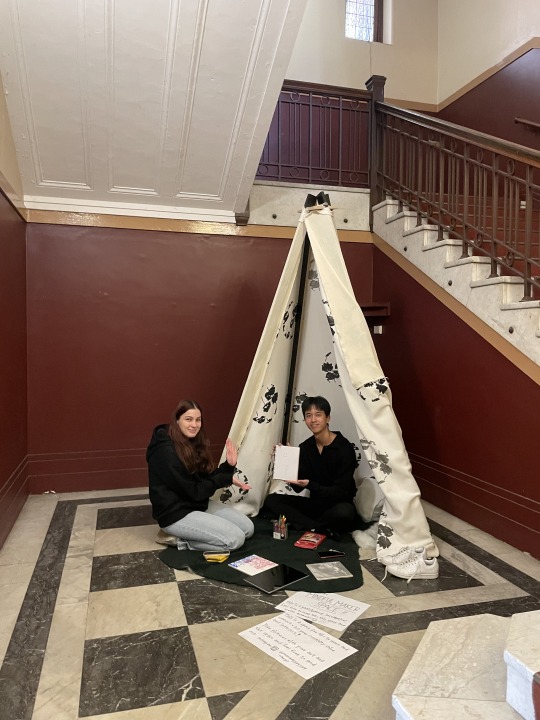
Documentation of classmates with their art
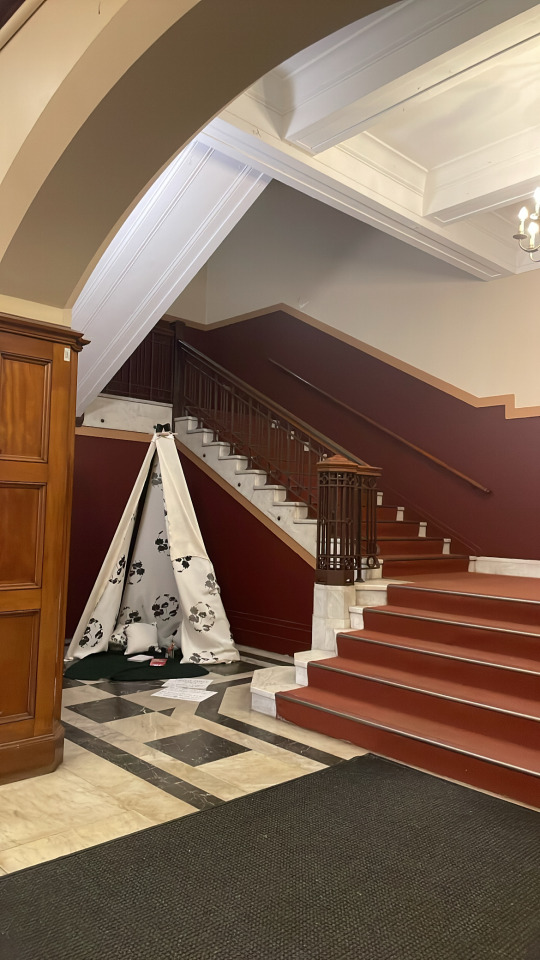
View from a further distance
Final Reflection
It was a success! I thought no one would come in and interact with the installation, but heard one of my classmates saying people were sitting there, and also doing some drawings in the sketchpad.
Stuart mentioned the social media that I wrote on the paper (might distort the idea of being a private space) - and I was too nervous that I should have added that that was intended for documentation. I did not receive any photos at all from anyone, only drawings from people. Hence, people are actually free from being visible on social media (as they feel comfortable not sending it to me).
This was my first interactive artwork, and it was amazing to see people engaging with the artwork.
drawings from anonymous people.
2 notes
·
View notes
Text
Filmaktion
Filmaktion was a loose-knit group of British filmmakers who worked and performed together during an intense period of activity in the early 1970s. Endorsing a more active, participatory experience of cinema, they re-imagined the possibilities for film projection as a live event.
[...] The core members – Gill Eatherley (born 1950), Malcolm Le Grice (born 1940), Annabel Nicolson (born 1946) and William Raban (born 1948) – are major figures in the development of experimental film in the UK. Their commitment to a radical formalist and political agenda shaped an ‘expanded cinema’ marked by multiple screen projections, live film performances and installations. All four were active members of the London Filmmakers’ Co-operative (1966–99), an influential collective that combined the production, presentation and distribution of film in one facility and helped to foster a more artisanal approach to filmmaking.
Filmaktion’s improvisational, participatory and immersive approach to film required a more flexible architectural environment than the conventional cinema. Art venues such as Gallery House in London and the Walker Art Gallery in Liverpool became the primary sites for their events. The more elaborate arrangement of screens and projections and the frequent presence of the artist’s own body in the work carved out a more sculptural, immediate and embodied space for cinema. The role of the spectator was also implicated, as the direct spatial and temporal experience of viewing film became more of a priority than the medium’s ability to record narrative actions staged in the past.
"Filmaktion", Tate Modern, [https://www.tate.org.uk/whats-on/tate-modern/filmaktion]
5 notes
·
View notes
Photo
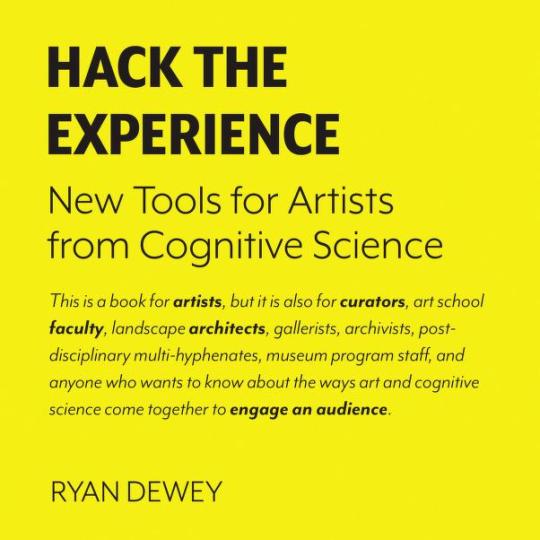
https://archive.org/details/992c6ff8-e166-4014-85cc-b53af250a4e4
Hack The Experience will reframe your perspective on how your audience engages your work. This will happen as you learn how to control attention through spatial and time-based techniques that you can harness as you build immersive installations or as you think about how to best arrange your work in an exhibition. You’ll learn things about the senses and how they interface with attention so that you can build in visceral forms of interactivity, engage people’s empathetic responses, and frame their moods. This book is a dense bouillon-cube of techniques that you can adapt and apply to your personal practice, and it’s a book that will walk you step-by-step through skill sets from ethnography, cognitive science, and multi-modal metaphors.
The core argument of this book is that art is a form of cognitive engineering and that the physical environment (or objects in the physical environment) can be shaped to maximize emotional and sensory experience. Many types of art will benefit from this handbook (because cognition is pervasive in our experience of art), but it is particularly relevant to immersive experiential works such as installations, participatory/interactive environments, performance art, curatorial practice, architecture and landscape architecture, complex durational works, and works requiring new models of documentation. These types of work benefit from the empirical findings of cognitive science because intentionally leveraging basic human cognition in artworks can give participants new ways of seeing the world that are cognitively relevant. This leveraging process provides a new layer in the construction of conceptually grounded works.
4 notes
·
View notes